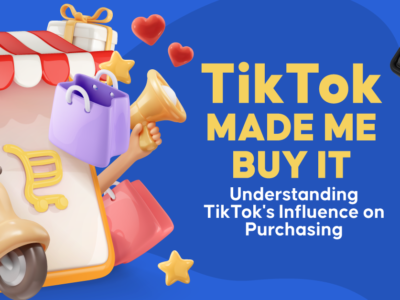From dance challenges to simple recipes, pop culture references, and even down to medical tips, TikTok has taken the world by storm. People from all over the globe, including the biggest of celebrities—like Lizzo, and the biggest of brands—like Microsoft, have dived into the world of TikTok and have used it as a platform for fun and to promote and connect with their audience.
According to app analytics company SensorTower, in the first quarter of 2020, TikTok acquired about 315 million downloads, making it the most-downloaded app in the world during the quarter alone. However, TikTok’s success wasn’t set from the start, and many would say it took inspiration from an old name that some of us may know—Vine. Let’s reel it back and see its roots.
What Happened to Vine?
Vine was launched in June 2012 by Dom Hofmann, Rus Yusupov, and Colin Kroll. Before its official launch, it was acquired by the microblogging platform Twitter for $30 million in October 2012. Vine was a popular video hosting social platform that allowed users to upload six-second, looping videos. The videos were usually hilarious, witty, silly, and creative. Vine grew so big that some celebrities even used it to promote their brand.
So, what happened?— In October 2016, the Vine mobile app was announced to be discontinued. Twitter ultimately shut the app down because the small Vine team in New York couldn’t grow its user base fast enough and big enough. Vine couldn’t keep up with its competitors, like the rising video platform Instagram, which added feature after feature. It is said that Vine’s shutdown was due to its failure to support its content creators, the intense competition, and the lack of advertising and monetization of the app.
In December 2016, the Vine mobile app was renamed Vine Camera and allowed its creators to make and upload videos again; however, the app would directly upload these videos to the user’s Twitter feed instead. However, this change failed to perform and met with poor reviews, and Vine completely folded in January 2017.
Why Did Vine Shut Down?
Vine’s creators slowly realized its unprofitability. They were burning money—a lot of it. So, they made the ultimate choice and shut it down; but to understand how TikTok succeeded, we have to see what Vine did wrong. Here are the biggest reasons behind Vine’s failure:
1. Vine didn’t meet market needs
Vine was a microblogging platform that allowed its users to share moments of their day with their social circle. However, it became an entertainment video platform that catered to a small circle of content creators and the majority of users being spectators as these creators released more and more content.
The problem arose when Vine stuck with its 6-second video rule despite the creators’ demand for longer videos so they could experiment with new video content types. The request falling on deaf ears led many video creators to switch platforms.
2. No monetization
Vine knew how to grow an audience, but it was terrible at monetizing its efforts. Vine’s creators created high-quality content, but if they weren’t going to get paid for it, why would they bother making them in the first place?
However, monetizing their creators’ efforts wasn’t the only monetization problem that the app had. The actual business wasn’t making any money either. The reluctance of the brand to monetize gave them no room to grow and had ultimately led to their shutdown.
The app had money coming through direct sponsorships for their top creators but never attempted to include sponsorship solutions into the platform.
3. The competition
If you look at today’s biggest social media platforms, one of the most popular social media marketing tips or trends is using short-form videos. Vine’s first said competitor was Instagram and its 15-second video feature.
Soon after, many—if not all—social media platforms now have a form of short-video feature.
- Facebook Short Videos
- Instagram Shorts
- Youtube Shorts
- Snapchat Snaps
Also Read: TikTok vs Reels - How Do They Compare
TikTok’s Humble Beginnings
As Vine struggled to keep its place in the video-sharing industry, a small player emerged from China. TikTok was launched in September 2016 by the Chinese technology company ByteDance. It was only available to the Chinese market and was called Douyin.
In 2017, ByteDance acquired another social media platform called Musical.ly, which was a platform that created and shared short 15-second lip-sync videos on their platform. Eventually, ByteDance closed Musical.ly, to the dismay of its users, but in August 2018, merged most of its features in a new global version of Douyin, which we now all know as TikTok.
The story of TikTok is a story that a lot of brands aim to achieve. Its success within the last four years since its release has catapulted the platform as one of the world’s most used platforms today.
Difference Between Tiktok and Vine
How is Tiktok different from Vine? Videos on Vine were only 6 seconds long, while Tiktok allots 60 seconds. Originally, Tiktok’s duration was 15 seconds, but that’s still significantly longer.
Monetization not available for Vine, hence creators had no incentive to keep making videos. On the other hand, Tiktok allows monetization when the user meets the requirements, allowing them to have a source of income.
Vine also lacked the video editing technology that Tiktok has today, making it inconvenient to use. Tiktok has video editing and different filters and effects that can make videos more appealing to watch. Additionally, the app includes a ‘Watch History‘ feature located in the ‘Watch History’ tab, which allows users to view their previously watched content and create more engaging videos.
Vine vs. TikTok: What Did TikTok Do Differently?
Vine and TikTok share a similar concept wherein they are both short video-sharing platforms. However, although similar in this sense, TikTok did what Vine failed to do: address market needs and take care of its creators—the app’s backbone.
TikTok marketing tools were created and integrated to support its growing user base and content creator circle. By incorporating these tools, TikTok established new marketing features into the platform that boosted its reach and returns. Today, we call it TikTok marketing.
What is TikTok marketing? According to Hootsuite, this is a brand’s use of TikTok to promote their business. Different tactics are included under this scope of social media marketing, including advertising, influencer marketing, casual, or viral content. Here are some of the marketing strategies that TikTok did to encourage continuous content from its creators.
1. They know their audience.
A proven content engagement strategy gave TikTok the boost it needed to reach the global market. The reason for TikTok’s massive growth is its ability to know where its market is. TikTok’s founding company, ByteDance, advertised where young people hung out, including competitor platforms such as Youtube and Snapchat. Because of this choice to promote to younger generations from the start, it became the most downloaded app in the first quarter of 2020 and became the fastest-growing social media platform.
2. TikTok continues to innovate and add features.
When Vine failed to innovate and step away from the 6-second video rule they had put up, TikTok continued to challenge the norms of video-sharing and integrates not only creativity but a more communal element to their app. Here are some features that TikTok currently has.
- Video uploading
- Video sharing
- Video editing
- Effects and filters
- Liked and comments
- Pinned comments
- Social platform sharing
- Notifications
- Direct messages
- Duets
- Stitching
- Tags
- Live streaming
- Geolocation
- Analytics
3. They take care of their creators.
TikTok launched a $200 million creators’ fund to support and provide opportunities for creators to succeed on the app. However, before the creators’ fund, creators could monetize their live streams by turning on Live Gifting and receiving gifts from their viewers in real-time, then cash out the rewards through Paypal.
Vanessa Pappas, General Manager of TikTok US, said in a blog that “Through the TikTok Creator Fund, our creators will be able to realize additional earnings that help reward the care and dedication they put into creatively connecting with an audience that’s inspired by their ideas.”
Remember that Vine lost its creators because it didn’t meet their needs. TikTok, on the other hand, is encouraging continuous growth in content generation by monetizing and putting more effort into highlighting their creators.
In return, their creators continue to create content and drive more traffic and revenue to the app. Here are some takeaways from the impact of collaborating with creators.
- TikTok-specific branded content in collaboration with its creators increases brand recall, engagement, and a whopping 65% higher 2-second view rates.
- Creators partnering with brands help get a brand noticed, increasing rapport between platform and brand.
- Product use by creators grabs attention and elicits a positive emotional response from their audience with an 83% higher engagement rate than a normal post.
- Content creators greatly add to TikTok’s success, with the app being the top-grossing app, surpassing $2.5 billion in consumer spending in 2021.
What’s Next For TikTok?
China marketing expert and founder of Alarice and ChoZan, Ashley Dudarenok, says that ByteDance has plans to overcome the global market. She also says that TikTok’s competition with social media giant, Facebook, has become more apparent.
Tech Buzz China founder Rui Ma also says that TikTok’s ambition has always been to go global. Many entrepreneurs in China made it their mission to build an international company.
Furthermore, TikTok plans to improve and optimize its platform to better cater to its audience. TikTok wants to enhance the user experience by integrating avatars, live audio streaming, new creator tools, and more. Lastly, TikTok also announced that it was updating its community guidelines to improve safety for its users—removing potentially harmful content from the platform, such as content promoting hateful ideologies, violence, eating disorders, or self-harm.
TikTok is Shaping The Future of Marketing
TikTok has become more than just a place to do modern dances and cooking shows; it has become a space for topics that involve politics, belief, culture; and promotes education and initiative.
It’s truly a great space to further your business’ expanse and a great opportunity to learn how to capture an audience like TikTok’s. However, knowing the algorithm of this fairly new player would be challenging, especially for more traditional companies.
If you need a company that understands your needs and can provide your business with effective content marketing solutions, look no further than Spiralytics, where we offer a full suite of digital marketing services to boost your online performance. Contact us today for a free consultation!







